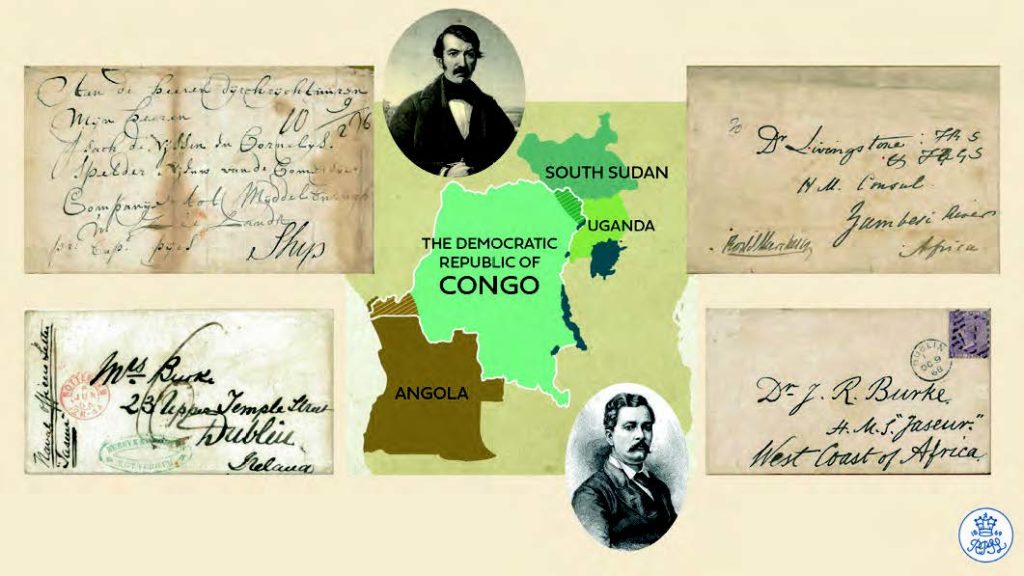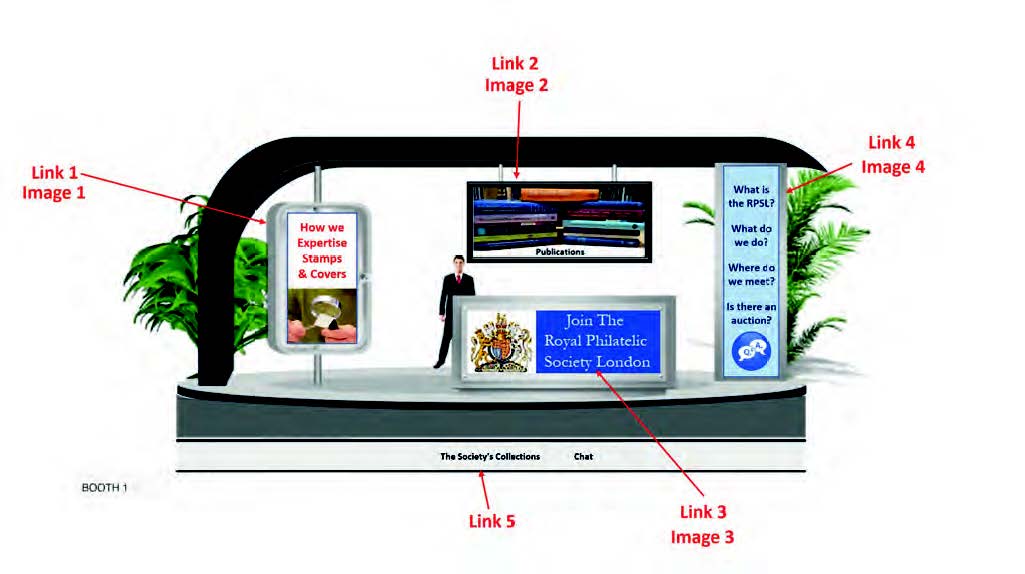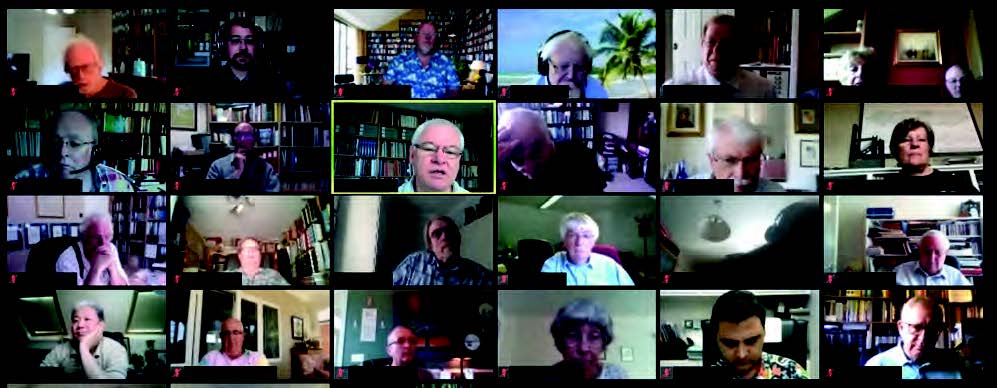
On 5th March 2020, Bob Galland gave an excellent talk on The Evolution of the British Franking System at the Royal Philatelic Society London, 15 Abchurch Lane, with a full display of hundreds of sheets and the usual presentation to the assembled audience of 86 members and guests. The Auditors were hap-pily ensconced in the office on the third floor trying no doubt to find a flaw in our accounts to justify their fee.
On 14th March, a few mad hatters like me conducted the AGM of the Malaya Study Group by kind permission of Spink in Southampton Row, though there was some argument about whether the garden door should be open to ventilate the room or closed to avoid the influence of cold which might put us all in bed with the flu!
In advance of the Government, on Monday 16th the Royal had cancelled all meetings until further notice, though it took Downing Street another week to announce the lockdown (a word they hated); in so doing it is said they caused the unnecessary early death of up to 20,000 people. By 26th March we were clapping for carers!
Such draconian action upset some members and caused disappointment and fear in others. By the Management Committee meeting on 18th March, London 2020 had been cancelled and so it was essential that the Society thought about methods of securing sufficient interest in philately to avoid potential resignations and financial losses. Remarkably, as Spink reorganised their auctions to be purely online, a new meaning of an old word was discovered: ZOOM!
What a life saver. If ever a Silicon Valley wizard needs worldwide recognition it is surely Eric Yuen, the founder of Zoom.com.
It took a month , which included the Easter holidays, for a programme of virtual meetings to be dreamt up, discussed and initiated by a small group of dedicated RPSL members and on 23rd April – St George’s Day and Shakespeare’s birthday – the first act started the drama with a show by Past President Frank Walton on the Dorothy Wilding issues of Great Britain from 1952 – 1967.
The result was dramatic! Hundreds of members logged in but many were unable to join. The user licence we had was only for 100 people and at the time it was thought adequate.
Not a bit of it; as the word spread members popped up from countries all over the world. Members stayed up into the early hours to watch and comments and questions poured in by simply clicking a button. Many more questions were forthcoming than ever at a physical meeting at No 15 or No 41 before it.
With this experience the Royal took to Zoom with a series of presentations which covered a wide range of philatelic and associated activity and which involved up to 166 viewers from 22 countries on one occasion, with well over 300 members from more than 30 countries attending to date.
Philately, it seems, has come into its own as a stimulating pastime, particularly when other forms of social activity are prohibited or severely curtailed.
Many auction houses have reported better than usual results as bidders spend more time searching, and retail sales, after a quiet start in lockdown, are reported now to be better than usual and of more substance than is often the case at stamp fairs or in shops. It is certainly the case in the wider world of fine arts that online sales have been successful, with some bids running into millions, and many smaller items bid on with little or no


inspection available at all. Of course in Philately it is usually sufficient to see a good scan of both sides of a thin object which can often be enhanced by magnification, provided the scan is at a suitable resolution, thus giving the online observer with time on their hands a better opportunity even than at a physical viewing.
One well known London dealer conducted a single page competition online, with useful prizes, which I had the honour of judging, acting with the Chairman of the ABPS. This was a new experience both for the entrants and for the judges, but the level of interest was impressive with some excellent entries from both experienced philatelists and, perhaps at this time more importantly, some keen, younger first timers. It remains to be seen whether 16 page or more competitive entries can be satisfactorily judged without seeing the originals, but surely it must be tried if travel is to be curtailed for any length of time.
That is not to say that the physical presence of material, judges and of course the exhibitors and viewers is not vital to the enhancement of the process of collection by bringing interested parties together for the all important social aspects of our great hobby. It would be a tragedy if virtual philately outpaced actual philately, but it is certainly a great adjunct during crisis times.
To their great credit, Estonia managed to perform a full exhibition with FEPA recognition during June.
The Royal Philatelic Society London has accepted an invitation to be a co-partner with the PTS in holding the first ever Virtual Stampex in this country.
The initial information and design information is looking very good, and philatelists throughout the land and overseas are looking forward to 72 hours of non-stop stamp shopping, focused lectures and seminars, opportunities to buy literature and accessories and subsequent home delivery without ending up with longer arms leaving the Business Design Centre than when entering.
This initiative is to be warmly welcomed as for the first time it will create a truly international Stampex. Everyone with the necessary equipment will be able to see the same offerings as though they were present. Spink is a major sponsor of this enlightened effort and all in the philatelic world wish them well.
There are several other excellences which have come to light as a result of the use of Zoom or other video conferencing facilities. The process has facilitated the interaction of professionals and amateurs at the same time from every corner of the globe. On a recent Zoom lecture, we had comments and questions from Australia, Singapore, New Zealand, the USA and Argentina, all within a minute or two of each other. This is not routinely possible except perhaps during major FIP shows which are fewer as the expense and organisation become more and more challenging.
The interaction of Societies has also been of benefit. The online lectures from the Collectors Club in New York, the Indian group of philatelists, the BDPh and APS transmissions are just a few of the possibilities that are becoming increasingly available. The sharing of information and depiction of collections, both philatelic and of three-dimensional museum pieces, becomes possible, and in due time I am sure that virtual presentations will continue alongside physical events well into the future and probably always.
So Virtual Philately is here to stay, and philatelists without the necessary equipment will miss out. It is vital however that in our enthusiasm to promote much wider coverage of our hobby we do not lose the essential and highly desirable social aspects of the hobby which have been around since the start 150 + years ago. There are many examples of philatelic friendships which have blossomed, sometimes into partnerships and even new potential philatelists joining our worldwide enterprise. We enjoy a social hobby, even if closet collectors are still happy with their isolation. It would be a very sad day which saw local clubs, regional meetings and the great gatherings at exhibitions and international shows diminished by online competition.
What is important however is that in this time of pandemic we have all learned that everyone is a lot closer than they ever thought, even if they are socially distanced locally or in another country. The two aspects, one perhaps only recently discovered, will need to work together to enhance the status of our hobby and bring new recruits to join our growing numbers.
The views expressed are those of the author and not necessarily those of the RPSL.


